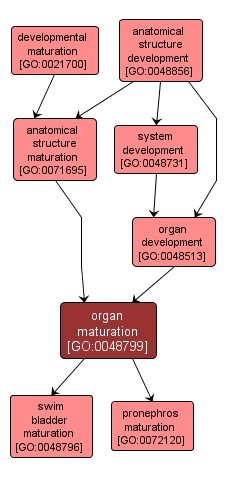GO TERM SUMMARY
|
| Name: |
organ maturation |
| Acc: |
GO:0048799 |
| Aspect: |
Biological Process |
| Desc: |
A developmental process, independent of morphogenetic (shape) change, that is required for an organ to attain its fully functional state. An organ is a tissue or set of tissues that work together to perform a specific function or functions. |
|

|
INTERACTIVE GO GRAPH
|














